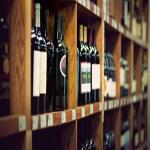The Art of Designing An Appealing Wine Label
This entry was posted on June 05, 2015 .

What's in a Label? When consumers are scanning store shelves and deliberating over which bottle of wine to select, how large of a part do labels play in their decision-making process? Lettie Teague, wine columnist for The Wall Street Journal, recently set off to find out.
Teague discovered that although there are no hard and fast rules when it comes to wine label design, certain conventions have developed over the years. She outlined her findings in an article for the news source published earlier this month.
3 Tenets of Wine Label Design According to veteran label designer Bob Johnson, color palette, typeface and paper quality all play significant roles. Moreover, aesthetic strategies tend to change in line with different price ranges.
- Color: Most major corporations use color like no other, and they ensure this remains the case by trademarking and aggressively safeguarding their particular hues - consider, for instance, Tiffany & Co. blue, UPS yellow and Veuve Clicquot orange. Companies take these measures for good reason, as according to Teague, "a memorable hue is probably the easiest way to get a buyer's attention."
- Simplicity vs. complexity: Generally, Johnson noted, simple labels and cheap wines are a good match because budget-conscious buyers tend to associate plain designs with low prices. Extremely expensive offerings also benefit from simple labels, but only if their individual components signify elegance, such as high-quality paper and precise printing. If you see an ornate label, chances are it's affixed to a bottle of mid-range wine that's too pricey for bargain-hunters but can't compete with the good stuff.
- Ostentatiousness vs. refinement: "Loud" designs that are bright, comical or cartoonish - a genre Johnson summed up as "'look at me' labels" - tend to be on the cheap end of the scale. That being said, some mid-priced wines also employ this type of tactic. Meanwhile, refined and understated designs are almost always paired with expensive vintage.
"A wine label with wide appeal is a winery's single greatest sales tool," Teague concluded. "It can make a good wine more desirable and a bad wine more salable."
From Boarding Passes to Solar Systems Buzzfeed showcased more than 30 different wine labels that stand out on shelves across the globes. In some cases, the designers ascribed to the conventions outlined above, while others broke all the rules. Here are a few examples.
- Inkwell Wines' ink blot: Australia-based Inkwell Wines took a leaf out of Rorschach's book when designing its label. To some, the inkblot looks like a butterfly. To others, it resembles two people sharing a kiss. Inkwell's website describes the logo as "an expression of how each of us understands wine, music and art."
- R Wines' boarding pass: Consumers browsing the aisles often scour wine labels for information about age, country of origin, type and variety. R Wine made this process a little easier by integrating all of these details into a boarding pass format for its aptly named Boarding Pass Shiraz.
- Blossom Cava Sparkling Wine's bouquet of flowers: Blossom Cava's packaging plays off a simple but usually unacknowledged observation: The shape of an upside-down bottle of wine strongly resembles a bouquet of flowers.
- Meteor Wines' solar system and Root: 1's root map: The label designers for White Fences Vineyard's Meteor Wines and Chilean offering Root: 1 took the brands' names literally by creating starscapes and root maps, respectively.
When it comes to wine label design, definitive dos and don'ts are few and far between, but one thing's for sure: A crisp, professional-looking label will make a positive impression.
Request your FREE instant quote today.

 Custom Labels
Custom Labels  Custom Beverage Labels
Custom Beverage Labels  Custom Lip Balm Labels
Custom Lip Balm Labels  Custom Warning & Safety Labels
Custom Warning & Safety Labels  Perfume Bottle Labels
Perfume Bottle Labels  Bumper Stickers
Bumper Stickers  Custom Prop 65 Warning Labels
Custom Prop 65 Warning Labels  Custom Stickers
Custom Stickers